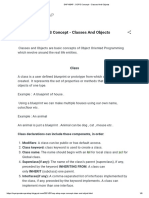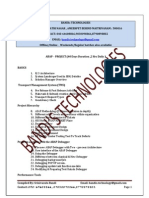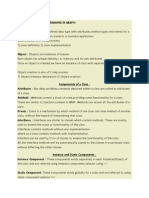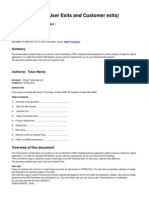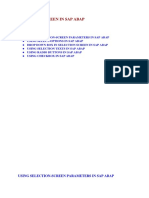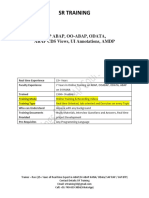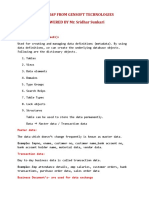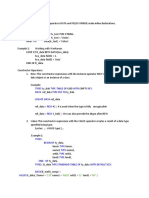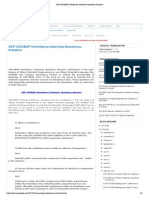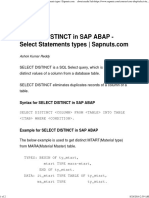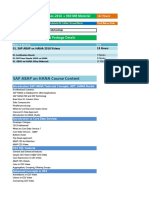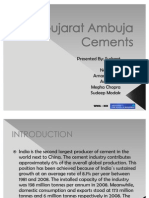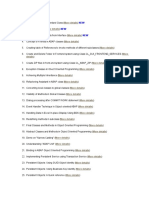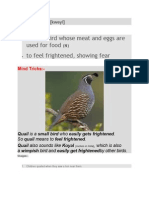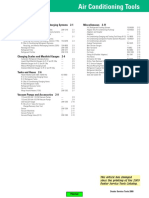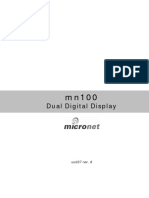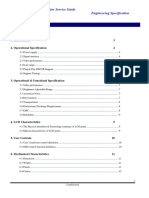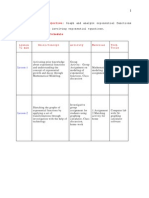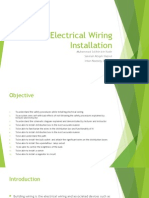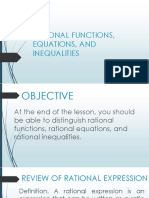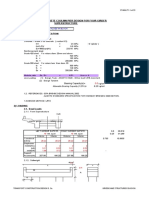Object Oriented ABAP
Hyderabad February 24-26th 2009 Instructor: Subhas Katikala.
�Workshop Goals
This workshop will enable you to:
Learn object oriented concepts. Learn the principle of object - oriented programming. Learn the application of object - oriented ABAP.
�Course Contents
Object Oriented Concepts Object Oriented Programming. Advantages of the Object-Oriented Approach Classes Components of a Class Methods Syntax and Visibility Instance Methods and Static Methods Constructor Reference Variables Creating References Assigning References
Attributes Syntax and Visibility Instance Attributes and Static Attributes
�Course Contents
Inheritance � Super classes and Subclasses � Visibility � Inheritance and the (Instance) Constructor � Parameters � Redefining Methods in OOABAP � Compatibility � Principles of the Narrowing Cast � Static and Dynamic Components � Final Classes and Methods
�Course Contents
Polymorphism � Advantages Compared to Procedural Programming � Abstract Classes and Methods � Component Namespaces in Classes
Interfaces � Defining and Implementing an Interface � Working with Interface Components � Interface References Narrowing Cast Widening Cast � Using Several Interfaces � Polymorphism and Interfaces � Polymorphism and Inheritance � Compound Interfaces
�Course Contents
Events � Define and Trigger Events � Handle Events � Register and deregister Events � Receive a reference from Sender
�Object Oriented Concepts
What are Are Objects? What Objects ?
Model Real world
Tree
Met hod Met hod Met hod
House
Data
Data
Met hod Met hod Met hod
Crane
Met hod Met hod Met hod
Data
Boat
Data
Met hod Met hod Met hod
� Objects are an abstraction of the real world � Objects are units made up of data and of the functions belonging to that data
SAP AG 1999
�OOPS
Object Oriented Programming
Encapsulation Inheritance Polymorphism Instantiation Interfacing Events
�Advantages
Simplicity Explicitness Maintainability Future Orientation
�Classes
Classes are the central element of object-orientation. A Class is an abstract description of an object. Classes are templates for objects. The attributes of objects are defined by the components of the class, which describe the state and behavior of objects.
�Classes
You define global classes and interfaces in the Class Builder (Transaction SE24) in the ABAP Workbench. They are stored centrally in class pools in the class library in the R/3 Repository. All of the ABAP programs in an R/3 System can access the global classes.
�Components in a class
�Classes Defining Local Classes
A complete class definition consists of a declaration part and, if required, an implementation part. The declaration part of a class <class> is a statement block:
CLASS c1 DEFINITION. . ENDCLASS.
If you declare methods in the declaration part of a class, you must also write an implementation part for it.
CLASS c1 IMPLEMENTATION. . ENDCLASS.
�Attributes
�Classes Defining Local Classes
�Attributes, Types, Constants - Syntax
�Attributes and Visibility
�Instance attributes and Static attributes
�Methods
�Methods : Syntax
�Methods and Visibility
�Instance methods and Static methods
�Instance methods and Static methods : Example
�Constructor
�Constructor : Example
�Static Constructor : Implementation
�Static Constructor : Call Examples
�Creating Objects
�Reference Variables
�Creating Objects : Syntax
�Assigning References
�Inheritance
Inheritance allows you to derive a new class from an existing class. You do this using the INHERITING FROM addition in the
CLASS <subclass> DEFINITION INHERITING FROM <superclass>
statement. The new class <subclass> inherits all of the components of the existing class <superclass>. The new class is called the subclass of the class from which it is derived. The original class is called the superclass of the new class.
�Inheritance
�Inheritance : Syntax
�Relationships between super classes and subclasses
Relationships between super classes and subclasses
�Inheritance and Visibility
�Inheritance and (Instance) constructor
�Parameters and CREATE OBJECT
�Redefining Methods in ABAP Objects
�Redefining Methods : Example
�Compatibility and Narrowing Cast
�Principles of the Narrowing Cast
�Static and Dynamic Types: Example
�Static and Dynamic Types for References
�Static and Dynamic Types for References
Widening the Cast
�Widening the cast
�Polymorphism
�Polymorphism
�Polymorphism
�Interface
Interfaces exclusively describe the external point of contact of a class, but they do not contain their own implementation part.
�Defining and Implementing Interface
�Working with Interface components
�Interface References Narrowing casting
�Interface
The assignment of an object reference to an interface reference is known as a narrowing cast since, as with inheritance, only a part of the object interface is visible once you have assigned the reference. With an interface reference, you can no longer address all components in the class carrying out the implementation, but only the components defined in the interface.
�Interface references widening cast
�Interface
The widening cast is, as with inheritance, the opposite of the narrowing cast: here it is used to retrieve an object reference from an interface reference. Obviously it cannot be statically checked, since an interface can be implemented by more than one class. An object reference cannot be assigned to an interface reference if it has itself not implemented the corresponding interface.
�Using several Interface
In the above example, one class is implementing several interfaces. Even if these interfaces contain components with the same name, they are differentiated in the class carrying out the implementation by the prefix <interfacename>~.
�Polymorphism and Interface
�Events
Objects or Classes use events to trigger Event Handler methods in other objects or classes. When an event is triggered any number of Event Handler Methods can be called. The events of a class can be raised in the same class using the RAISE EVENT Statement. Events have only output parameters which are accepted by the Event Handler Methods as input parameters. The link between the trigger and the handler is established dynamically at runtime using the statement SET HANDLER.
�Events Overview
�Triggering and handling Events : Overview
�Defining and Triggering Events
�Handling and Registering Events
�Handling Events
�Registering for an Event : Syntax
�Deregistration
�Registration/Deregistration : Handler Table
�Event handling : Characteristics
�Events and Visibility







